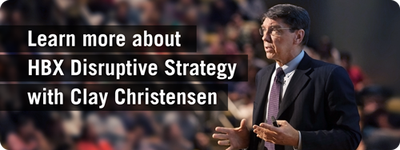Price goes up, and demand goes down. It’s one of the most fundamental relationships in economics. If the price of a cup of coffee increases, demand for coffee, all else equal, will fall. For example, if your regular Starbucks drink order were to double in price overnight, you might reconsider indulging in your daily fix of caffeine.

But does this inverse relationship between price and quantity demanded always hold? No - and for many reasons.
Anyone who has taken Econ 101 can cite some famous exceptions to the so-called “law” of a downward-sloping demand curve. For example, demand for a luxury good, like a sports car, might actually be greater with a higher price. For some car buffs, a high price may be a signal of superior quality, and more Lamborghinis would be demanded the steeper the price tag.
On the flipside, demand for some other goods (so-called “Giffen” goods, named after Scottish economist Robert Giffen), may fall with price. When the price of a cheap commodity, such as rice, falls, the average shopper might feel just a little bit wealthier and buy the quinoa this week instead.
So that's how it works with consumer goods - but what about services? That's a trickier question and yet an even more important one to answer.
As workers throughout many cities in the U.S. and Europe continue to demand a higher minimum wage (many protestors in America are looking to double the $7.50 base wage), the question of whether the law of demand applies to labor markets is becoming increasingly important to politicians, policymakers, and businesses.
A business perspective
How can we think about this issue of higher wages from the point of view of a firm, or a manager? And what conclusions can we draw for our business?
Let’s first look at it from a purely economic perspective: In theory, a hike of the federally-required minimum wage should depress the demand for labor. If companies must pay each worker more, the law of demand predicts that they will hire fewer workers. The minimum wage sets a floor under which businesses and potential employees cannot contract, even if both sides are willing. Based on price alone, the number of jobs available to all in the labor force should theoretically fall.
If that's the case, nationwide cries for better compensation for minimum wage earners would then only benefit those employees who still have jobs after the policy change. Less-skilled workers, whose hourly output may be valued by companies at less than $15, might be laid off, and those who are already out of work may find it even harder to get a job.
What’s more, as technology becomes more sophisticated, it becomes increasingly more attractive for firms to switch from humans to labor substitutes such as robots, drones, and self-service machines. A construction worker or maid, whose skills are hard to imitate, may still be able to find a job at a higher minimum wage. A permanently pricier cashier or secretary with little experience might not. Increasing the costs of workers would very likely expedite the process of automation (which is already moving forward at a staggering pace).
Fewer people working and greater incentives to invest in job-stealing cyborgs... economically at least, it appears to be an inappropriate moment to be raising the price of workers.
Is it that simple?
However, as we saw in the case of goods, economics is often far from cut and dry. True, an increase in the price of labor may decrease firms’ demand for workers—but again, we must add that pesky “ceteris paribus” or “all else equal” clause to the end of any conclusion we can draw. That is, a minimum wage boost would decrease the demand for workers, assuming the policy change affects nothing else. Yet this is not often the case; other variables may matter. And these variables may matter a lot for your business.
For example, maybe an increase in wages would boost employee morale and actually increase productivity, creating more value for your company. Or maybe better-paid employees value their jobs more, and staff turnover is reduced because of the change. Any number of factors could play a role and, indeed, managers must take into account more than just the cost of a worker before deciding to hire or fire.
The law of demand, and more generally the field of economics, is often far more nebulous than textbooks make it out to be. Will an increase in wages be beneficial to the cities and countries that are considering such a measure? It's hard to tell. But, for managers and policymakers, a basic understanding of economics can provide a useful framework for making decisions and understanding the possible impacts of such a change.
What do you think will happen?






















